Oh, Barcelona! The effervescent La Rambla pedestrian street full of vibrant flower stalls and mime artists plying their trade along bustling bar terraces; Gaudi’s exuberant and expressive Modernist buildings; swimmers, surfers, buskers and skaters animating the long stretches of sandy beaches and seafront promenades; and the labyrinthine Gothic Quarter with its enchanting streets, hidden squares and, of course, the world-famous La Boqueria food market with over 300 stalls.
While it’s safe to say that La Boqueria is the best place for visitors eager to sample the market’s quality eats, there are plenty of other less crowded and arguably less commercialised markets to be found in the city – 39 in fact, as the Catalan capital is one of the few places in the world with at least one market per district. Besides avoiding the crowds, you’ll get the chance to gain a unique local insight into Catalan market culture; meet charismatic locals (even if it’s behind a face mask); sample the best regional produce; and try a raft of classic dishes at your own pace. Here are a few of our favourites.
And if you’re flying from a city that’s part of Singapore’s Vaccinated Travel Lane (VTL) list, why not transit through the Little Red Dot with Singapore Airlines? Here are new and exciting restaurants in Singapore that opened during the pandemic, durian desserts for the adventerous eater, as well as brewery and distillery tours to cap your visit.
1. Mercat de Santa Caterina
Situated in the old part of Barcelona – in the trendy Born neighbourhood, just a short walk away from the Cathedral of the Holy Cross and Saint Eulalia – a lively, multi-coloured and undulating roof catches pedestrians’ attention: 325,000 ceramic tile pieces in 67 vibrant shades evoke the various colours of the fruits and vegetables available inside the building’s Santa Caterina Market. Once indoors, the visual explosion meets an olfactory feast, as the smells of fresh meat, fish, fruits and vegetables assault visitors’ senses. Smaller than La Boqueria, this offers a more intimate introduction to the joys of a Catalan market.
Right in the centre of the market, you’ll find Can Marti Jordi charcuterie and cheese shop. Opened in 1927 by the current owner’s grandfather, it sells an interesting variety of Spanish cheeses: from the well-known Castilian Manchego and Basque Idiazabal to rarer offerings such as Andalusian Payoyo and Canarian Majorero, without forgetting classic Catalan cheeses like Moia. In the meat department, there are traditional cold meats such as jamon (Spanish cured pork ham) and fuet (Catalan thin dry-cured pork sausage).
On one of the side walls hangs a Balearic delicacy: sobrassada, a round, fat-cured ground pork and paprika sausage that can be eaten raw by spreading it on bread, or baked with fried eggs. “It’s a little homage to the founder’s origin,” explains the diligent middle-aged manager Merche Pau, with her funkily painted nails, while wrapping some exquisite cold cuts at the speed of light.
Santa Caterina also houses one of the most iconic market bars in the city, Bar Joan; a humble family-run eatery that serves homemade set lunch menus as well as esmorzars de forquilla (fork breakfasts): so-called because you need a fork to eat them, unlike with the usual sandwiches and pastries. Their full sit-down meal includes filling dishes such as stews, offal, fish or sausages and beans, accompanied with a glass of wine and an espresso. Avenue de Francesc Cambó, 16
Insider tip: Antonio Garces owns Menuts Toni, the only remaining offal shop in the market. “My advice for first-time visitors is to put any prejudices towards offal meats aside and try Bar Joan’s delicacies,” he says. “The ones that do always come back to my stall to say thank you.”
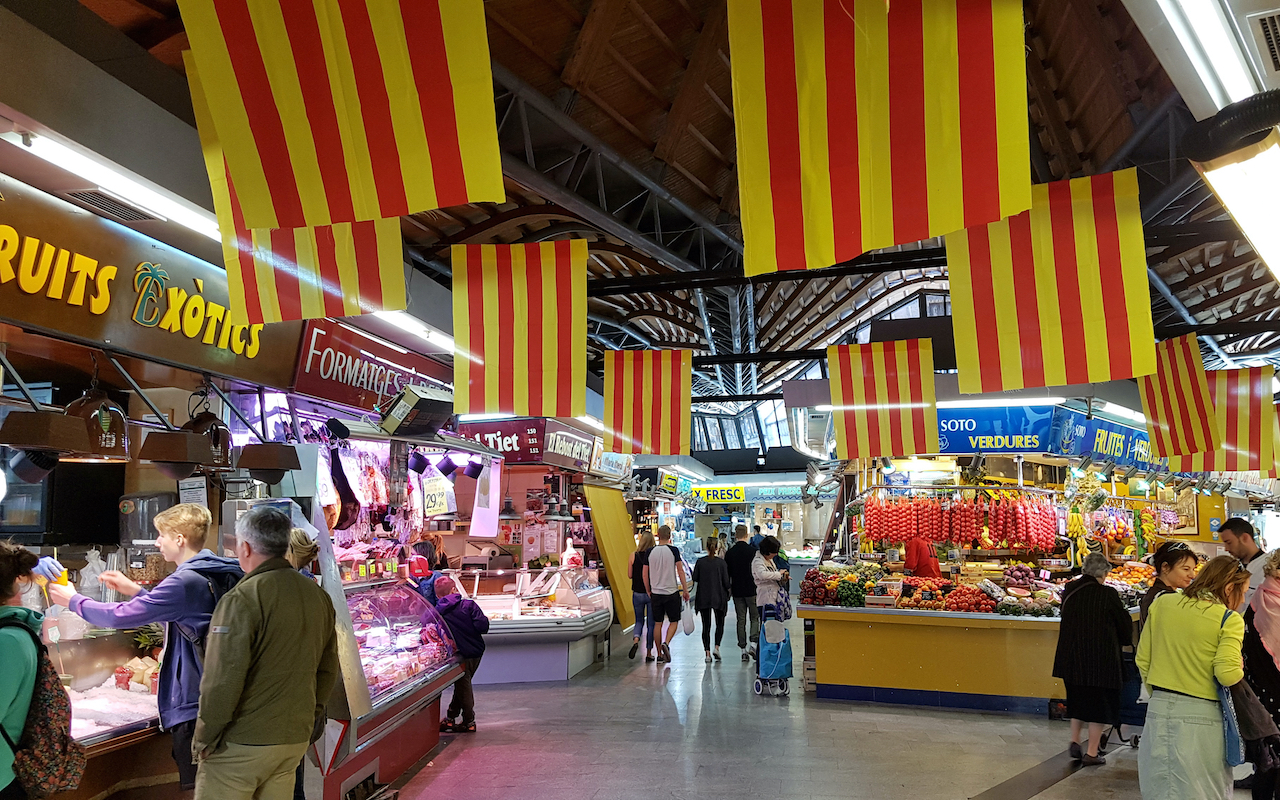
2. Mercat de Sant Antoni
Built in 1882, Sant Antoni Market’s floor plan is in the shape of a Greek cross, and you’ll find an impressive 28-metre-high octagonal dome in the centre. This magnificent market was the first to be erected outside the old part of the city. Today, it comprises an outdoor clothing market, an indoor food market boasting 52 food stalls and a collector’s market that takes place al fresco every Sunday. It’s the biggest market in the city, and the only one that has activity seven days a week. During the latest renovation works in 2018, the surrounding area was pedestrianised, making this place an excellent alternative to the busier La Boqueria.
Twenty-something Marc Crespo works at the olive shop Olives i Conserves Torres, which was started by his great-grandmother in 1933. His face lights up and breaks into a proud smile when he talks about his family heritage. “Sometimes I wonder if we have olives running in our veins instead of blood,” he quips. On Thursdays, he individually hand-stuffs about 3kg of Antonia olives with high-quality Cantabrian anchovies. By Saturday midday, they’re sold out, as is his best-selling seasoned olive mixture: Gordal and Kalamata olives seasoned with Cava vinegar, olive oil, large capers, cloves and rosemary.
It’s no surprise that Crespo’s products sell out so quickly on Saturdays, as Spanish weekends are all about getting together with friends to enjoy an aperitif. This pre-lunch social ritual always involves good company, laughter and an alcoholic drink, usually vermouth, accompanied by small tapas of cold cuts, cheeses, canned seafood and the ubiquitous olives.
You’ll also find Masclans, one of the oldest market dynasties in Catalonia. This sixth-generation stall, specialising in dried and salted cod, opened at the same time as Sant Antoni Market. Although this fish is caught in the cold waters of the North Atlantic – and not on the warm Mediterranean coast – Catalan cuisine wouldn’t be the same without it.
Adjacent to the Masclans’ stall is a small white-tiled bar. Over its L-shaped wooden bar, traditional cod recipes are served to a loyal customer base: from crunchy bunyols (cod fritters) to the quintessential refreshing Catalan salad esqueixada (cod, red and green pepper, onion, black olives and olive oil) as well as flaky bacalla a la llauna (cod baked in a tin and seasoned with paprika, garlic, white wine and parsley).
Xavier Sendra, the current owner of Casa Sendra charcuterie, also chose to open a tasting corner in his parents’ former shop when he took it over upon their retirement. You’ll find cheese and cold meat platters, hand-sliced ham tapas, croquettes, Argentinian meat pies, classic Catalan baguette sandwiches rubbed with ripe tomato and drizzled with olive oil and salt, as well as Barcelonans’ guilty pleasure: Frankfurt sausages. Calle Comte d’Urgell, 1
Insider tip: Francina Turull, who works Sant Antoni Market’s customer service desk, recommends coming to the market on a Thursday or Friday. “I love the Thursday and Friday vibe,” she says. “Since they’re the busiest days of the week, stalls with tasting corners offer a wider range of exquisite products.”
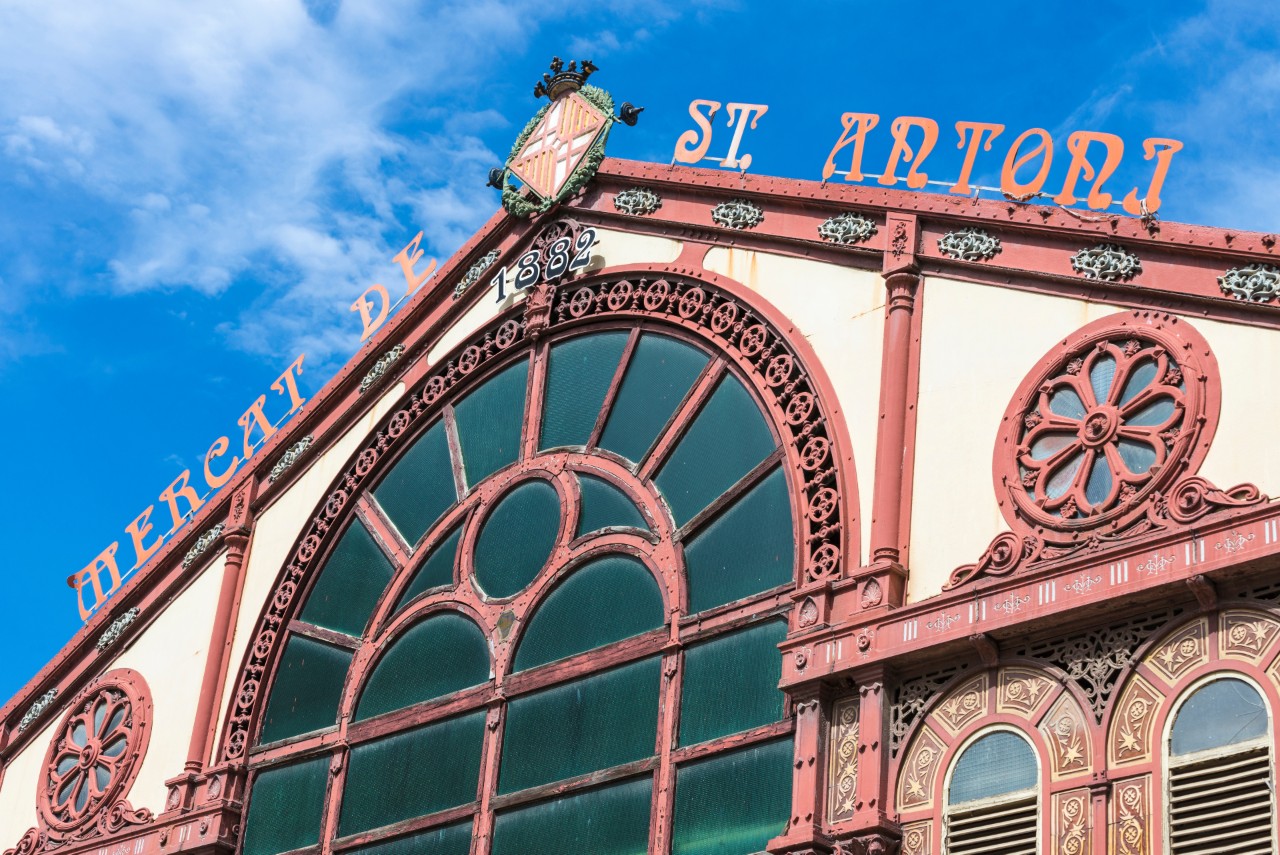
3. Mercat de la Concepcio
A stone’s throw from Gaudi’s La Pedrera and Casa Batllo buildings, La Concepcio Market was built in 1888 and named after the neighbouring Gothic Revival church. Its impressive iron structure and large glass windows were inspired by London’s Crystal Palace and the airy elegance of Paris’ Les Halles Market. Since one of the market’s entrances has two big outdoor flower stalls – open 24 hours, 365 days a year – it’s popularly known as the Flower Market.
Inside Concepcio, uber friendly polyglot Erika Budria manages a stall that perfectly sums up the Mediterranean diet: Garrigues Colors i Emocions. Its shelves are filled with bottles of olive oil and wine from the Les Garrigues region – the epicentre of Catalan olive oil production. Here, you can purchase one of the most exquisite olive oils in the world: Les Cabanes 100% Arbequina extra virgin, as well as Costers del Segre wines.
“Costers’ vineyards are between the Pyrenees mountain range and Segre River basin,” says Erika, who is a graduate in wine studies. “Limestone soils and strong thermal oscillations create wines of great chromatic richness and expressiveness. There’s life beyond Penedes, Priorat and Emporda, the most well-known Catalan wine-regions.”
Early on Saturday mornings, flower delivery staff finish their long night shift and indulge in a hearty serving of callos at Bar Solera before heading home. Miguel Baladrón, the owner, only cooks this rich, gelatinous tomato-based cow tripe stew once a week.
Another popular pit-stop for shoppers is Bar Manuel, where hungry diners snack on a pincho de tortilla (a slice of potato omelette with bread) washed down with a coffee, beer or wine. Most Spaniards would agree that this humble dish is one of their most beloved. Not to be confused with the Latin American wheat or maize flatbread, the tortilla de patatas is a simple and versatile recipe comprising eggs, potato and olive oil.
However, when it comes to deciding whether it should be made with or without onions, the country becomes a battlefield. Mariano Serrano, the current owner of Bar Manuel who inherited the operation from his father-in-law in the 1980s, belongs to the pro-onion front, just like his faithful customers. Calle Aragó, 313-317
Insider tip: Conxi Fuentes is the owner of Carns Selectes Conxi, a butcher’s shop. “The best moment to come to Concepcio is during any celebration that involves flowers,” she says. “During Christmas, the market is filled with poinsettias. And on the 23rd of April, Saint George’s Day, which is the Catalan equivalent to Valentine’s Day, it’s full of red roses.”
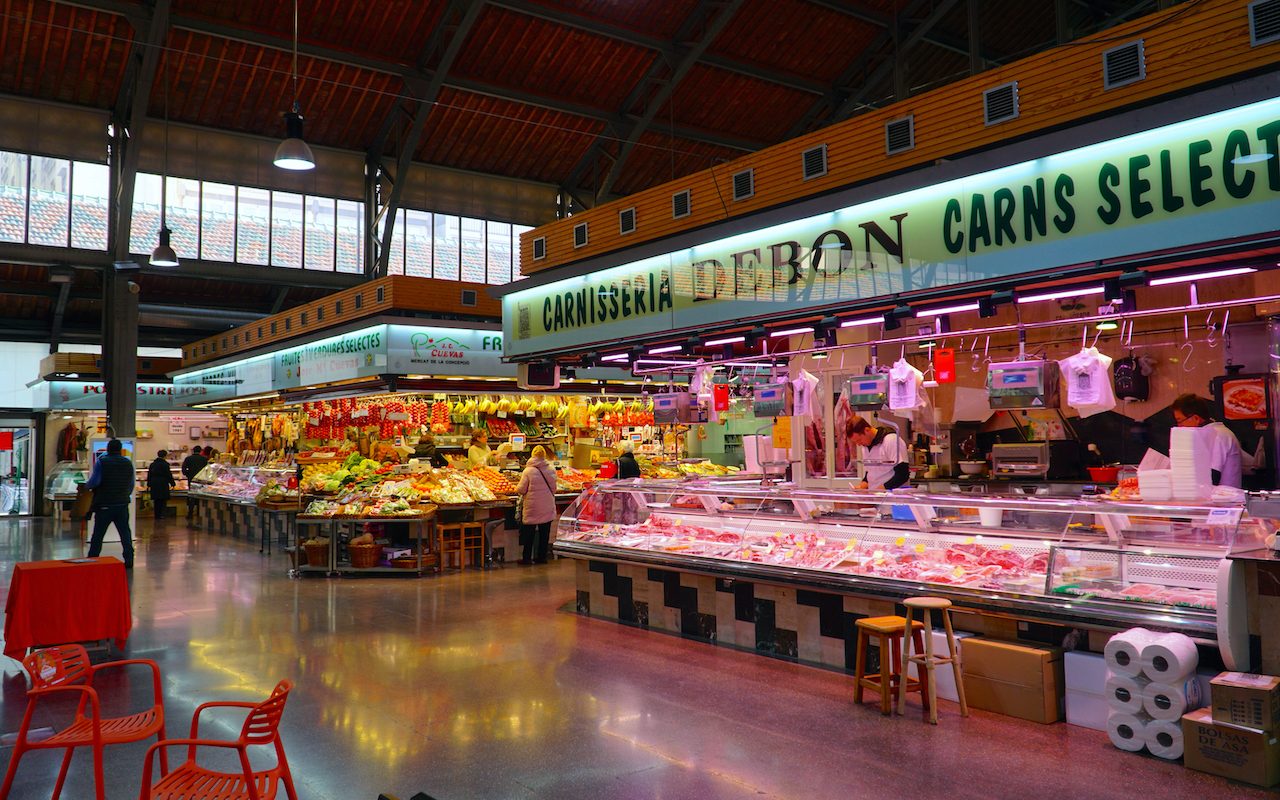
4. Mercat del Ninot
Locally lauded for its diverse selection of food stalls, this market was built in 1933 and was initially named Avenir, after a nearby tavern that sold the cheapest wine in the city. Later on, its name changed to Ninot (which means “doll” in Catalan). Legend has it that the tavern owner’s daughter went to the beach one day and found a wooden doll, which had been the figurehead on the prow of a boat. She brought it home and it was put on the tavern’s entrance, thus changing the name of the bar and the market forever. Today, the figurehead that gave the market its popular name is held at the city’s Maritime Museum, while a reproduction of it is displayed on the front of the market.
Dolors Porta’s parents opened the Porta Novau legume stall in 1961. Today, her sons are also involved in the business, which has since expanded into a vegetarian and vegan takeaway shop a block away from Ninot. This kind of legume shop only exists in Catalonia. Born during the Industrial Revolution, they were a helpful cooking timesaver for female factory workers, as they could get pre-cooked lentils, beans and chickpeas relatively inexpensively.
Nowadays, these stalls have broadened their offerings by selling traditional comfort dishes for takeaway, like aromatic Catalan-style fava beans (with black sausage, bacon, mint and parsley), creamy fricando (beef fillet and wild mushrooms) and hearty trinxat (similar to the British bubble and squeak – fried potatoes and cabbage).
The market is also home to thirtysomething Zoe Diaz, who belongs to the fifth-generation fishmonger family that owns La Medusa 73, where she works as a manager. Half fish shop, half bar, customers can pick up Mediterranean, Cantabrian or Atlantic fresh fish and have it cooked there, or they can choose from the menu’s options. Arros marinera (seafood rice), and sautéed octopus with shiitake and fresh asparagus are the among the favourites.
The owner of De Cruz Morales, the enthusiastic Marta Morales, comes from a long lineage of market poulterers. She swapped chicken for beef when she married Dani de la Cruz, a connoisseur of aged meat, and together they decided to open the store. “We spend our family holidays visiting cow farms all over Spain and Europe in search of the perfect steak,” explains Marta. “Meat is more than our main source of income, it’s our life and passion.” Top-quality certified Galician, Asturian, Leonese, French and Swiss meats can be purchased in their stall. Have them cooked in the back kitchen and enjoyed at the table with fresh hand-sliced fried potatoes and Padron green peppers as side dishes. Calle Mallorca, 133
Insider tip: Oscar Soto is the owner of bookshop La Llibreria del Ninot. “Don’t eat before coming to El Ninot Market, as it has outstanding bars and food stalls with tasting corners,” he advises. “The best thing of all, though, is that it hasn’t become a tourist trap.”
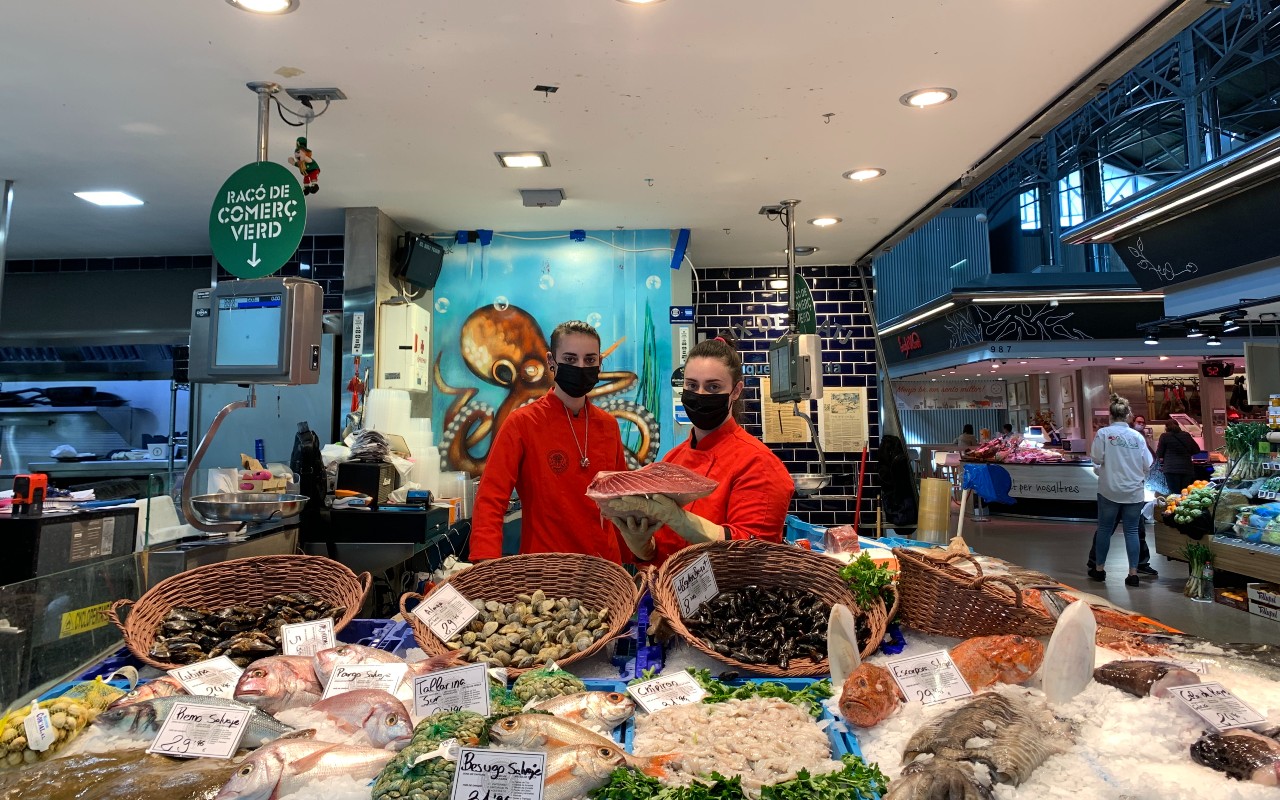
5. Mercat de la Llibertat
Just a short stroll away from Gaudi’s less visited, but still spectacular, Vicens House – his first big project as a recently graduated architect – is La Llibertat Market. All metal structures and exposed brick walls, it features stunning and stylish Modernist geometric floral ornamentation. The design was planned by Gaudi’s best friend and regular collaborator, Francesc Berenguer. Built in 1888 in the Gracia neighbourhood and fully restored in 2009, the World Union of Wholesale Markets awarded the Llibertat refurbishment works with their top prize.
Just like in any other Catalan market, there’s a stall dedicated to dried nuts of all sorts: Lagrana. The importance of dried nuts in Catalan cuisine is crucial. In order to thicken stew stocks and sauces, many traditional meat, fish and rice dishes are finished with the addition of picada – a mixture of different crushed dried nuts and bread. Lidia Castello, the owner of Lagrana, turned her parents’ former fruit and vegetable stall into what it is today. “My daughter Marta got involved in the business recently and I love the gourmet twist that she’s giving it,” she says proudly. “My parents’ legacy not only continues, but evolves.”
[sk_quiz]
Their star products are saffron and Marcona almonds. Considered the highest quality variety worldwide and known as the “Queen of Almonds”, these sweet, delicate and buttery Spanish nuts command passionate attention outside the country and have become the favourite of many global chefs. During Christmas time, they also sell turrones: a nougat-like confection made of almonds, egg white and honey.
Over at El Tast del Noi fish shop and bar, it is possible to pick any fresh fish or seafood chosen from the stall and have it prepared to your liking. Owner Paco Gonzalez – the former chef of Botafumeiro, one of the most prestigious seafood restaurants in Barcelona – also has an extensive menu of tapas and slow-cooked casseroles to choose from. Baby squid with clams and beans, as well as tuna with walnut vinaigrette are must-trys. In addition, and only if you book ahead, it is possible to try his mouth-watering paella and lobster rice with broth.
Insider tip: “My favourite stalls are Rafael i Lola fish shop and Montjau charcuterie, which has extremely friendly service and excellent stock,” says Meritxell Torne, a regular Llibertat shopper. “Shopping in the local market is about personal attention. Sellers and buyers build up long-term relationships based on loyalty. Markets have a human side that supermarkets don’t have.” Plaza Llibertat, 27
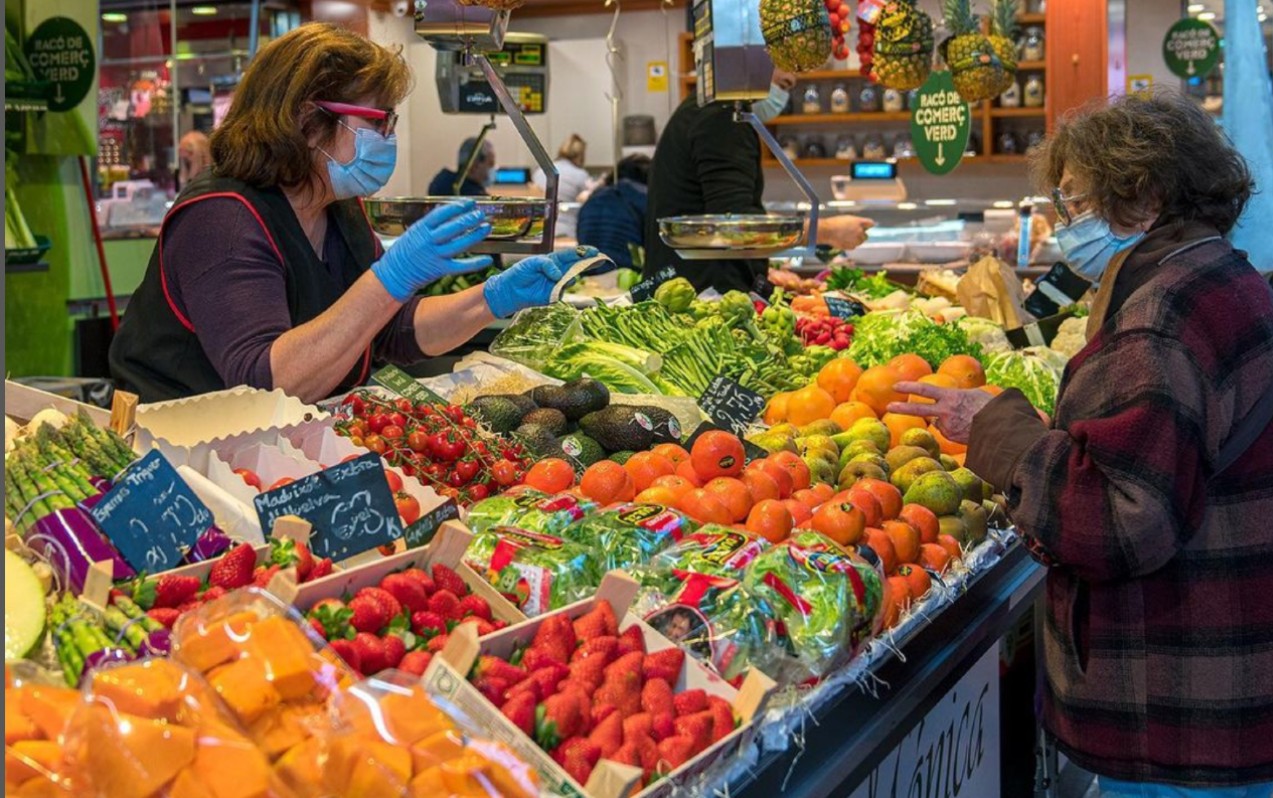
Images were taken before the start of the Covid-19 pandemic.
Please check the establishments’ respective websites for opening hours as well as booking and seating requirements before visiting, and remember to adhere to safe-distancing measures while out and about.
To learn more about Singapore Airlines flights, visit singaporeair.com. For updates and travel advisories, please visit Ministry of Foreign Affairs’ website.
The post 5 best hidden food markets to explore in Barcelona appeared first on SilverKris.
from SilverKris
No comments:
Post a Comment